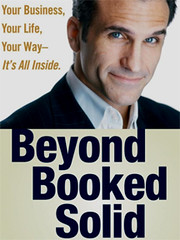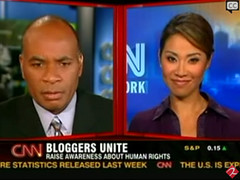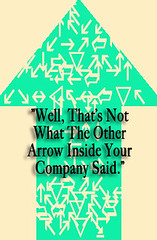According to Advertising Age, the top 100 U.S. advertisers last year increased ad spending by 1.7 percent, while measured media spending rose a negligible 0.3 percent for major marketers. This is the most sluggish growth for advertising since the 2001 recession.
However, a sluggish economy is not only to blame. The entire industry is slowly shifting toward including and incorporating social media. While those who already are engaged in social media don’t always appreciate the notion, advertising seems to be slowly remembering its roots.
“There is no such thing as national advertising. All advertising is local and personal. It’s one man or woman reading one newspaper in the kitchen or watching TV in the den,” Morris Hite, who once oversaw Tracy-Locke-Dawson before it was purchased by BBDO/New York in 1982.
Sure, newspapers might have lost significant ground over the last few years, with Peter S. Appert, an analyst at Goldman Sachs, telling The New York Times “I think the probability is very high that there will be a number of examples of individual newspapers and newspaper companies that fall into a loss position. And I think it’s inevitable that there will be closures in this industry, and maybe bankruptcies.” But if we remain true to Hite’s point, we remain fixed on a single, simple lesson that sometimes seems forgotten.
The emphasis on advertising needs to be message over medium.
Again, the best ads connect to the consumer before demonstrating the cleverness of the advertising team. It’s the kind of thing that Seth Godin touches on now and again, except with a somewhat different conclusion on how we got here. Advertising wasn’t always about slapping innovative ads on top of average products. That’s a relatively new idea that deviated from its golden era.
If you look at the difference between golden era Volkswagen advertising and the most recent campaign, it might make more sense. The 1960s advertising carried the right message for the product. The new campaign attempts to give a nod to that era, but without a tangible connection to the consumer. Maybe that’s why Volkswagen sales are off this month, which goes a bit beyond the price of oil.

However, a sluggish economy is not only to blame. The entire industry is slowly shifting toward including and incorporating social media. While those who already are engaged in social media don’t always appreciate the notion, advertising seems to be slowly remembering its roots.
“There is no such thing as national advertising. All advertising is local and personal. It’s one man or woman reading one newspaper in the kitchen or watching TV in the den,” Morris Hite, who once oversaw Tracy-Locke-Dawson before it was purchased by BBDO/New York in 1982.
Sure, newspapers might have lost significant ground over the last few years, with Peter S. Appert, an analyst at Goldman Sachs, telling The New York Times “I think the probability is very high that there will be a number of examples of individual newspapers and newspaper companies that fall into a loss position. And I think it’s inevitable that there will be closures in this industry, and maybe bankruptcies.” But if we remain true to Hite’s point, we remain fixed on a single, simple lesson that sometimes seems forgotten.
The emphasis on advertising needs to be message over medium.
Again, the best ads connect to the consumer before demonstrating the cleverness of the advertising team. It’s the kind of thing that Seth Godin touches on now and again, except with a somewhat different conclusion on how we got here. Advertising wasn’t always about slapping innovative ads on top of average products. That’s a relatively new idea that deviated from its golden era.
If you look at the difference between golden era Volkswagen advertising and the most recent campaign, it might make more sense. The 1960s advertising carried the right message for the product. The new campaign attempts to give a nod to that era, but without a tangible connection to the consumer. Maybe that’s why Volkswagen sales are off this month, which goes a bit beyond the price of oil.










































